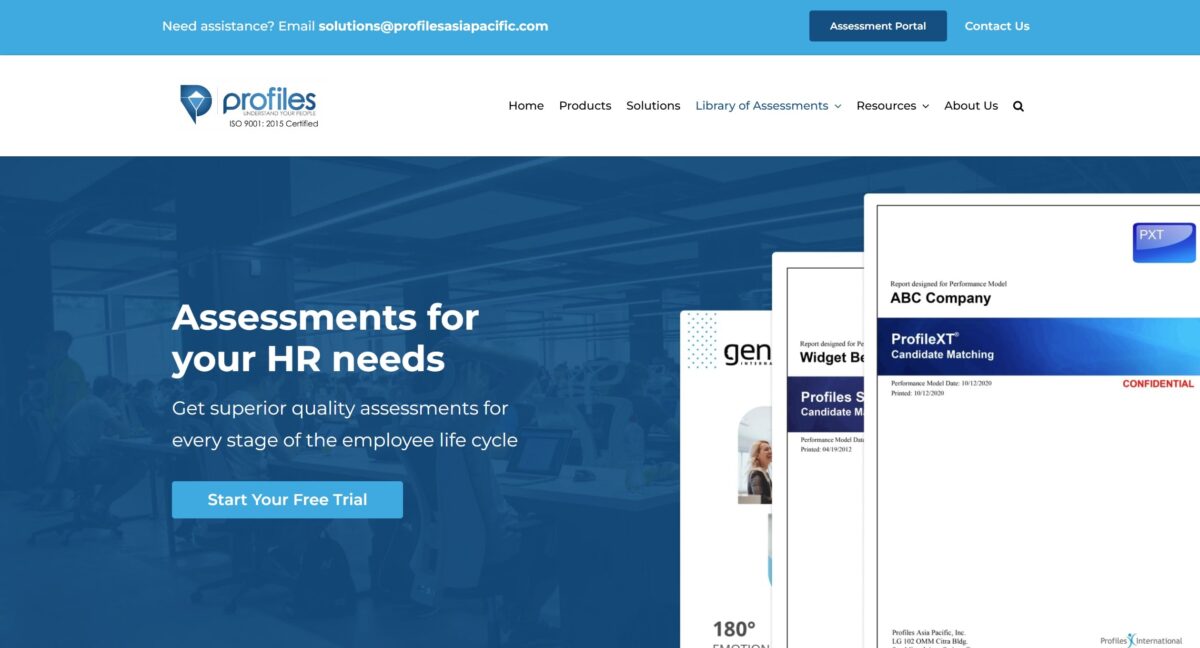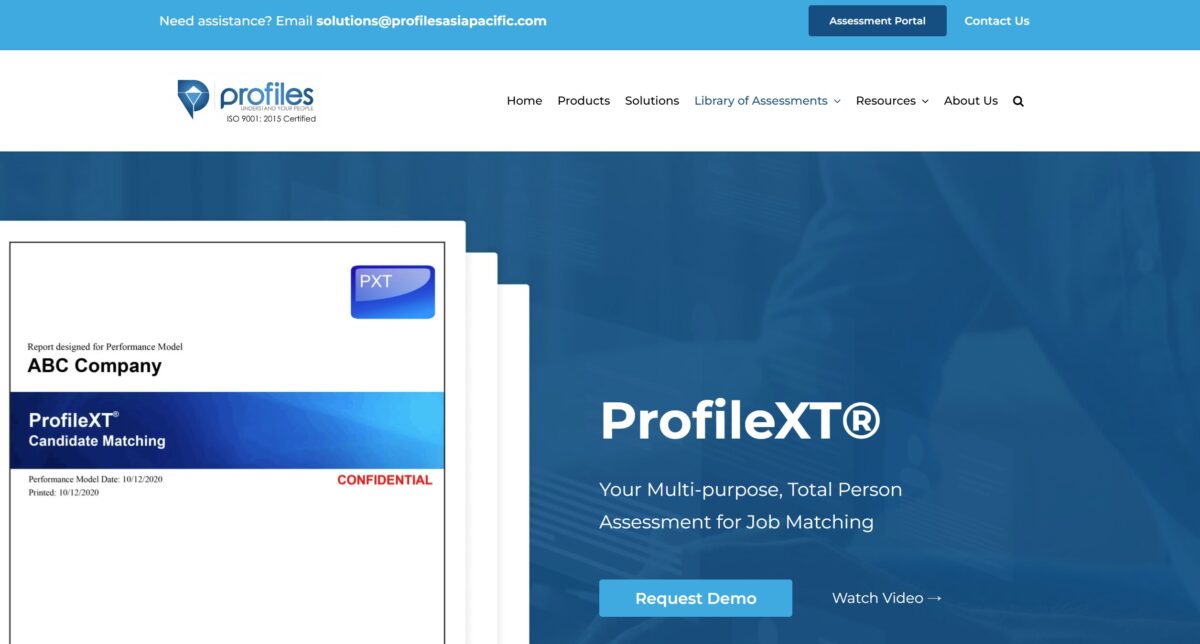Many successful organizations have employee referral programs that incentivize current employees for recommending candidates who turn into successful hires.
Having one can be a game-changer, as it can streamline your hiring process and enhance the quality of candidates you attract.
Implementation, however, can become a challenge due to variables like the resources needed to offer incentives or your HR team’s bandwidth. To help you navigate such factors, we’ll explore the ins and outs of employee referral programs, discussing:
- What they are and what they entail
- Considerations you should make before creating one
- An employee referral program’s advantages
- How you can build a successful one
What is an employee referral?
To start, an employee referral occurs when existing personnel endorse individuals from their personal or professional circles for open positions within your company.
The main idea is that workers, having a vested interest in the organization’s success, will refer people they believe to be a great fit in terms of skills and cultural alignment.
At the same time, the process involves your staff submitting the candidate’s resume, along with a brief recommendation, to your hiring team.
What is an employee referral program?
An employee referral program, meanwhile, is a systematic strategy designed to compel workers to endorse qualified applicants for your organization’s available roles.
This structured initiative often includes incentives such as bonuses, extra vacation days, or other perks, all of which you offer to encourage employees’ active participation.
Overall, your end goal is to tap into your staff’s networks to attract top-tier talent, reduce recruitment time and costs, and increase employee engagement and retention.
Benefits of an employee referral program
We’ve briefly mentioned some upsides to having your own employee referral program. To give you a deeper understanding, however, we’ll dive into the key ones.
Better hire quality
Employees are more likely to recommend people who are capable of meeting a role’s demands and matching the company’s culture. 88% of employers, in fact, say that referrals are the best source of candidates who are better than average.
Speedier hiring
Referred candidates often move through the hiring pipeline faster than those sourced through traditional methods. In truth, compared to employees sourced through career sites, endorsed individuals are 55% faster to hire!
This could make a world of difference for competitive firms, particularly those who constantly deal with tight deadlines and demanding product development schedules.
Cost-effective recruitment
Since employee recommendations typically result in quicker hires, a referral program can reduce your expenditures on job advertisements, agency fees, and other recruitment activities.
In truth, according to ERIN, you can save $7,500 in productivity and sourcing costs when hiring a referral. In terms of return on investment (ROI), 82% of employers even rate employee referrals above all other sourcing options.
New hire engagement and retention
Employee engagement plays a key role in getting fresh talent to stay. Since referred employees come into your company with an already-established support network, they often come in motivated and committed, while having higher retention rates.
In fact, ERIN found that 45% of personnel sourced from referrals stay longer than 4 years. On the other hand, only 25% of those recruited through job boards stay for over 2 years.
Strengthened company culture
Since they know the values and needs of their organizations, employees typically endorse individuals who will likely fit into the existing culture.
70% of employers, in fact, say their referred hires fit their company’s culture and values better than non-referred ones, which helps cultivate a more cohesive, desirable workplace.
Should you launch an employee referral program?
Despite knowing the benefits of an employee referral program, you should first determine whether or not you should implement one. To do so, take the following into account:
- Affordability: Does your organization have the budget to provide the financial or non-financial incentives needed to encourage quality referrals?
- HR capacity: Does your HR team have enough bandwidth to manage the influx of referred candidates and process additional applications?
- Current hiring needs: Do you have open positions that need to be filled, or do you anticipate a frequent need for new hires in the future?
- Hiring culture: Is your organization always on the lookout for top talent, or does it prefer to focus on developing its existing teams?
- Workload management: Is there a sufficient amount of work to justify bringing on new hires?
- Team satisfaction: Are you satisfied with the quality of your current team, or would you like to bring in more employees of a similar caliber?
- Types of incentives: Beyond financial rewards, can you offer other perks such as additional time off or flexible work arrangements?
How to set up your employee referral program
Once the above variables are considered, you should be ready to start building your own employee referral program. To make the process smoother, here’s a step-by-step overview:
Step 1: Define goals
First and foremost, clearly establish what your referral program aims to achieve. Make sure your goals are Specific, Measurable, Achievable, Relevant, and Time-bound (SMART), as unrealistic ones are counterproductive. Also, keep these in mind:
- Identify vital metrics: Recognize what will define your program’s success. Your indicators can range from the number of referrals, to cost per hire, to retention rates.
- Set clear objectives: Once your barometers are established, how do you want to approach them? For instance, do you want to minimize your costs or improve employee retention?
- Align them with organizational goals: Make sure your program supports broader organizational goals, such as scaling up operations or improving team dynamics.
Step 2: Establish guidelines
Next, put in place rules that dictate how the overall referral process works. This will include:
- Eligibility criteria: This defines who can make referrals. Typically, all employees can, except those who directly influence hiring decisions—think of HR and hiring managers.
- Referral process: This details the steps employees must follow to submit a referral, including what forms they need to accomplish or what platforms they should use.
- Incentive structure: Clarify what rewards you’ll offer and the conditions under which they’ll be given.
- Assessment procedures: Describe how employee referrals will be evaluated and processed, including responsible parties and timelines.
Step 3: Develop incentives
The goal is to compel employees to give successful referrals. To do that, decide on the rewards you’ll offer and ensure they’re attractive and attainable:
- Establish rewards: Choose what types you’ll offer, whether they be cash bonuses, gift cards, or extra vacation days.
- Consider a tiered system: Think of a structured approach where rewards increase based on the position’s level or the successful hire’s actual tenure with your organization.
- Communicate clearly: Make sure employees understand what rewards they can earn and the conditions they must meet to receive them. This ties into the next step as well.
Step 4: Formulate a communication plan
Here, your internal communication strategies will come into play, as your aim is to inform employees about your referral program.
Identify effective communication channels as well, such as emails, meetings, or internal portals, then ensure they understand the process and its benefits. You can try the following as well:
- Introduce your referral program to all employees via an engaging launch announcement
- Regularly remind employees about your program through internal newsletters and the like
- Provide referral program materials such as FAQs, process guides, and submission forms
Step 5: Set up tracking mechanisms
Implement instruments that monitor referrals and ensure the timely processing of job applications and employee rewards.
For instance, some HR tools have applicant tracking systems (ATS) that guarantee the proper documentation of referral submissions, hiring, and reward distribution.
Regularly create reports from these records as well, as these help you measure your program’s performance and identify areas of improvement.
Step 6: Solicit feedback
One of the best ways to build and improve your program is to gather input from participants. So, regularly ask employees for feedback on the referral process, as well as the incentives you offer.
Then, to keep your program effective and appealing, use their perspectives to make necessary adjustments. Before doing so, establish multiple feedback channels, such as surveys, suggestion boxes, or conversations with staff involved in the referral process.
Step 7: Evaluate program success
You established SMART goals and metrics for this step in particular, as it involves measuring your program’s performance. To properly assess its effectiveness:
- Measure outcomes: Compare your program’s results to your initial goals. Look at indicators like the number of referrals, cost per hire, and the like.
- Analyze data: Review the figures you collect, then identify trends or insights that can help enhance your program. For instance, you may find that certain departments submit referrals more actively than some, or that specific incentives are more sought after.
- Improve continuously: Regularly revisit, reevaluate, and refine your program to ensure it continuously delivers value and stays aligned with your business goals.
Best practices for employee referral program success
At this point, you should know the ins and outs of referral program creation. To maximize its benefits, however, consider these helpful tips:
Keep it simple
Ensure the referral process is straightforward, as it eases employee participation. Streamline application procedures for referees as well, as complex ones may deter them from pushing through with their applications.
60% of job seekers, in fact, say they’ve abandoned an application due to a lengthy or complicated process. To streamline yours:
- Use technology that lets you manage job applications, track candidate progress, and streamline communication.
- Ask interview questions that are relevant to the open role, then see if the referee has questions for you as well.
- Provide candidates with timely updates about their application status. This shows respect and maintains their interest.
Involve your employees
Participants will endorse people from their personal or professional circles, so involve them throughout the process. Keep them updated, as this also maximizes the program’s transparency.
Finally, to reiterate, ask your involved personnel for feedback as well. The best way for you to improve your referral program is to gather participants’ perspectives as they’ll catch details you’ll surely miss.
Learn what employees want
Obviously, to drive employee participation, the incentives you provide in exchange for successful referrals must be attractive. So, conduct surveys and ask personnel what would urge them to submit candidate recommendations, whether it be financial or not.
Use comprehensive assessments
Simply being endorsed by your employee doesn’t automatically make a candidate qualified for an open role. To maximize the quality of your referred hires, take them through comprehensive evaluations.

Profiles Asia Pacific’s best-in-class assessments can help in this regard, as they allow you to gauge the total person for better selection decisions.

Our ProfileXT®, for example, measures an individual’s cognitive abilities, behavioral traits, and interests to determine how well they fit an open role. If you want to maximize such tools, simply reach out!
Always provide input
Constantly give constructive feedback, even when the referral doesn’t turn out as planned. For instance, discuss with employees why their referees didn’t pass the application process. This will help them identify more fitting candidates the next time around.
The same goes for recommended individuals. Let them know why they didn’t make it through to hiring, but make sure to follow these tips:
- Be detailed: Give specific, actionable, and respectful feedback. Summarize the referee’s key strengths and weaknesses in a straightforward manner.
- Be timely: Promptly inform candidates about their application’s outcome. Don’t waste their time as those who fail may still need to look for other opportunities.
- Point them in the right direction: For unsuccessful referees, suggest development areas and upskilling and reskilling opportunities. This helps them improve and secure future roles.
- Show gratitude: Thank the candidates for their time and effort, then encourage those who failed to try again, especially if they’re a better match for currently unavailable roles.
Though this will require added effort, it maintains positive relations with unsuccessful referees. It also leaves an outstanding impression and establishes stellar employer branding, which nurtures connections with potential future talent.
Recognize participants’ efforts
Acknowledge employees who actively participate, even if their referrals aren’t immediately successful. A simple thank you token, like a gift card, will suffice, as this shows appreciation for their efforts.
The goal is to attract more referrals, but make sure to avoid overdoing it. Always rewarding program participants, even for failed hires, is counterproductive.
Wrapping up—Streamline recruitment and attract qualified talent with an employee referral program
An employee referral program is an extremely effective tool that enhances recruitment success. By leveraging your existing employees’ networks, you can attract top talent, reduce hiring costs, and cultivate a more engaged and cohesive workforce.
Your program’s results, however, hinge on careful planning, clear communication, and continuous evaluation. However, by following the steps and best practices we outlined you can set up an employee referral program that drives your organization’s growth.
Published: February 9, 2017
Updated: July 12, 2024




